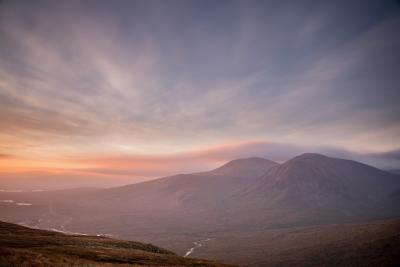Emulating Interactions Between Atmospheric Particles and Light with Machine Learning
Accurately modeling how light interacts with small atmospheric particles, like dust and smoke, is critical in climate and weather models because of their impact on the radiative budget. However, the relevant small-scale physics cannot be directly computed in a model large enough to represent the entire atmosphere. Researchers developed a neural network that can be used to accurately emulate this physics with a relatively small computational expense. By exploring a range of different neural networks, researchers identified an option that provides an optimal balance between accuracy and complexity.
Atmospheric aerosols play a critical role in the Earth system, partly through their direct interaction with light passing through the atmosphere. This work developed a new method to represent the key physics underlying aerosol–light interactions more accurately in Earth system models. It also lays the groundwork for including physical processes in models that are impractical to represent using conventional approaches. Ultimately, this work will improve estimates of direct aerosol radiative effects in climate projections, which is currently a major source of uncertainty.
Accurately representing the interaction between light and atmospheric aerosols is a crucial component of modern climate models. However, directly computing the radiative properties of aerosol populations is far too computationally expensive to perform during climate simulations, so optical properties are typically approximated using a simple statistical model. This work develops a neural network capable of representing aerosol–light interaction in the Energy Exascale Earth System Model (E3SM) far more accurately than the existing solution. Researchers identified optimal neural architectures for this problem by evaluating neural networks with randomly generated wirings. Randomly generated deep neural networks that include many skip connections can consistently outperform conventional architectures of comparable size. This style of neural architecture search has substantial potential to improve the development of representations of other physical processes in climate models. The network developed here will significantly improve the accuracy of aerosol radiative effects modeled by E3SM.
The research used high-performance computing resources from PNNL Research Computing and the National Energy Research Scientific Computing Center.

